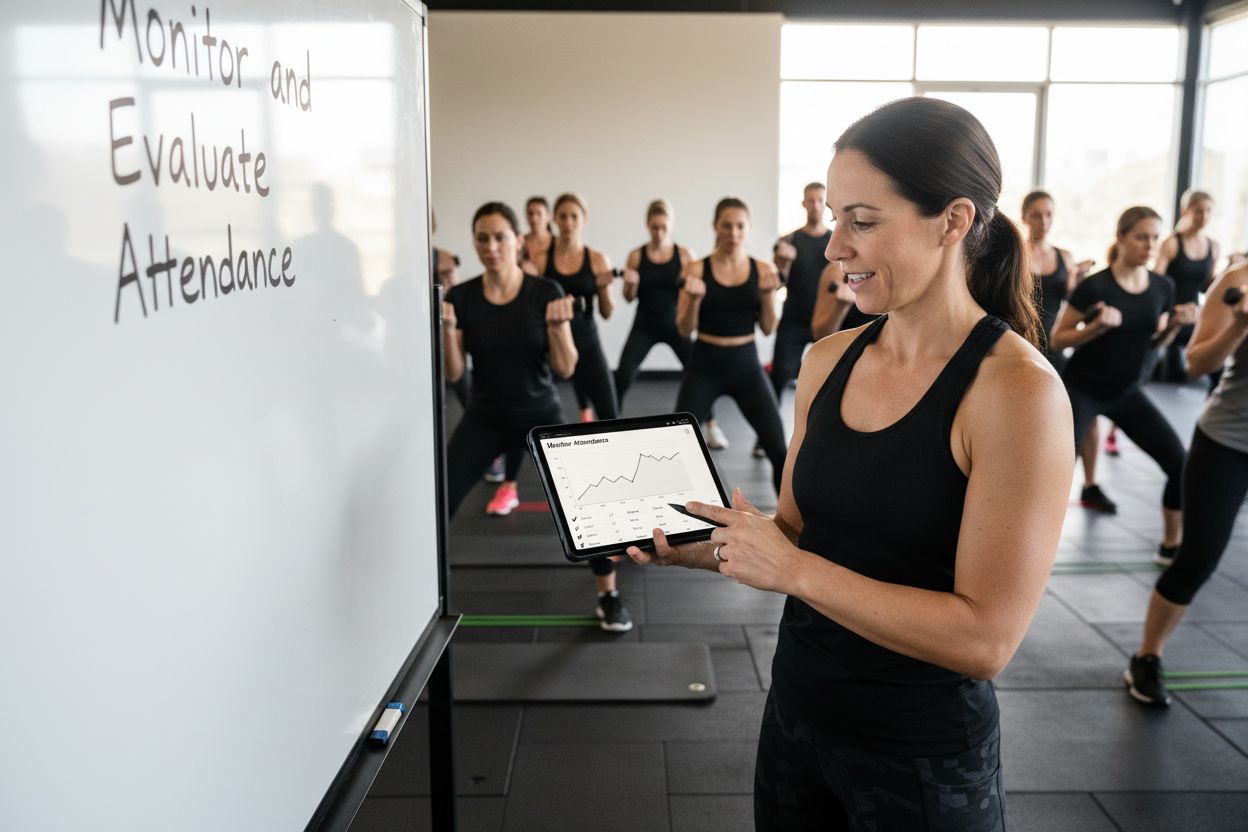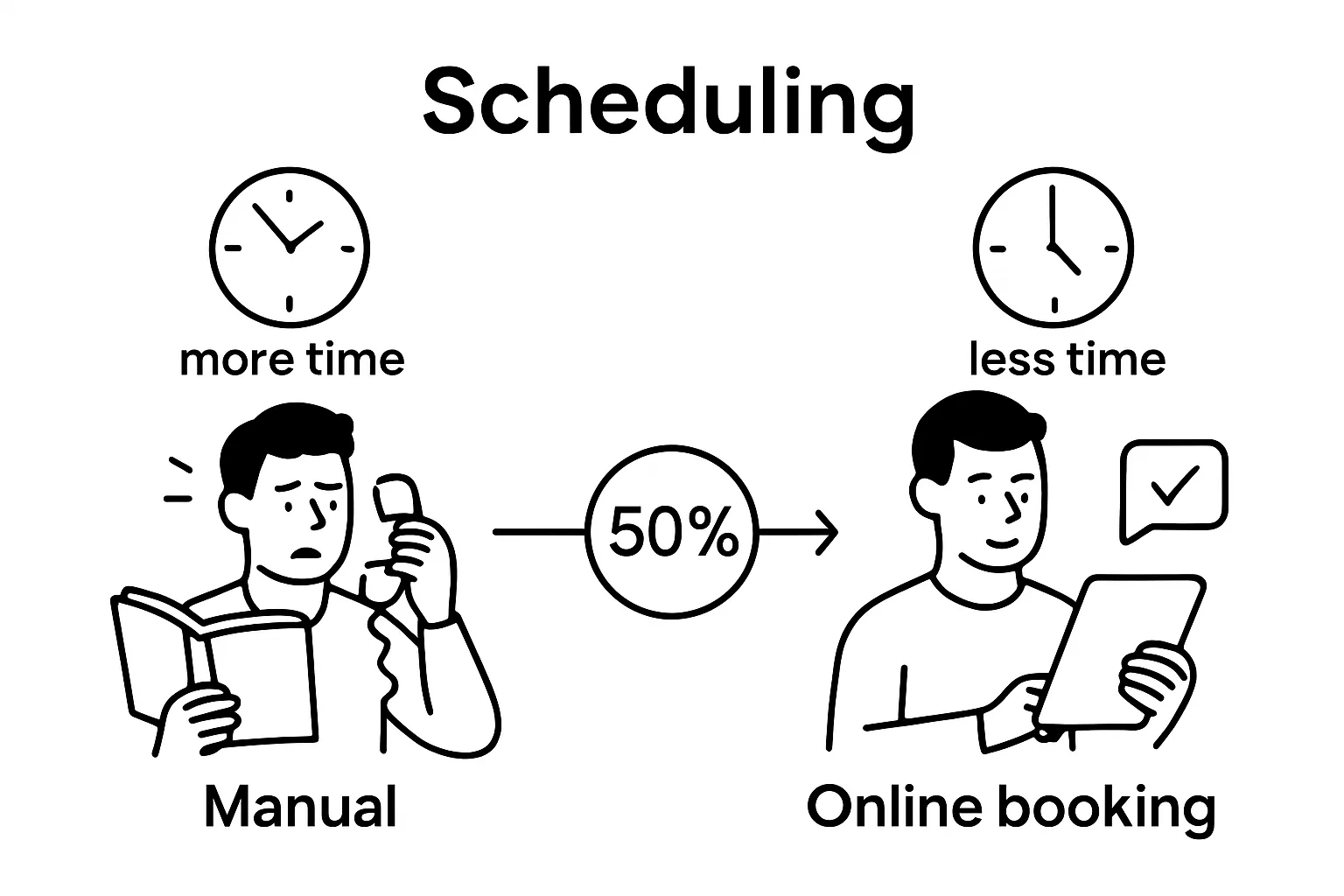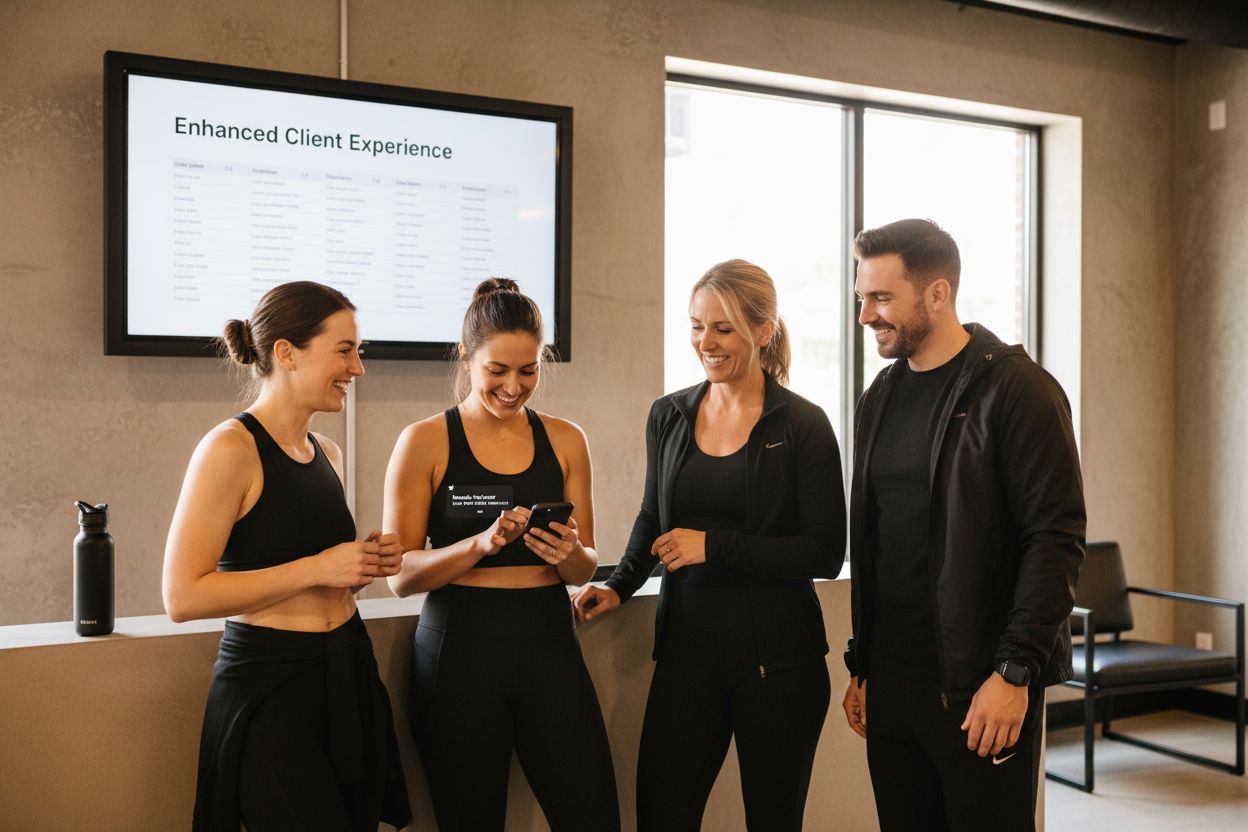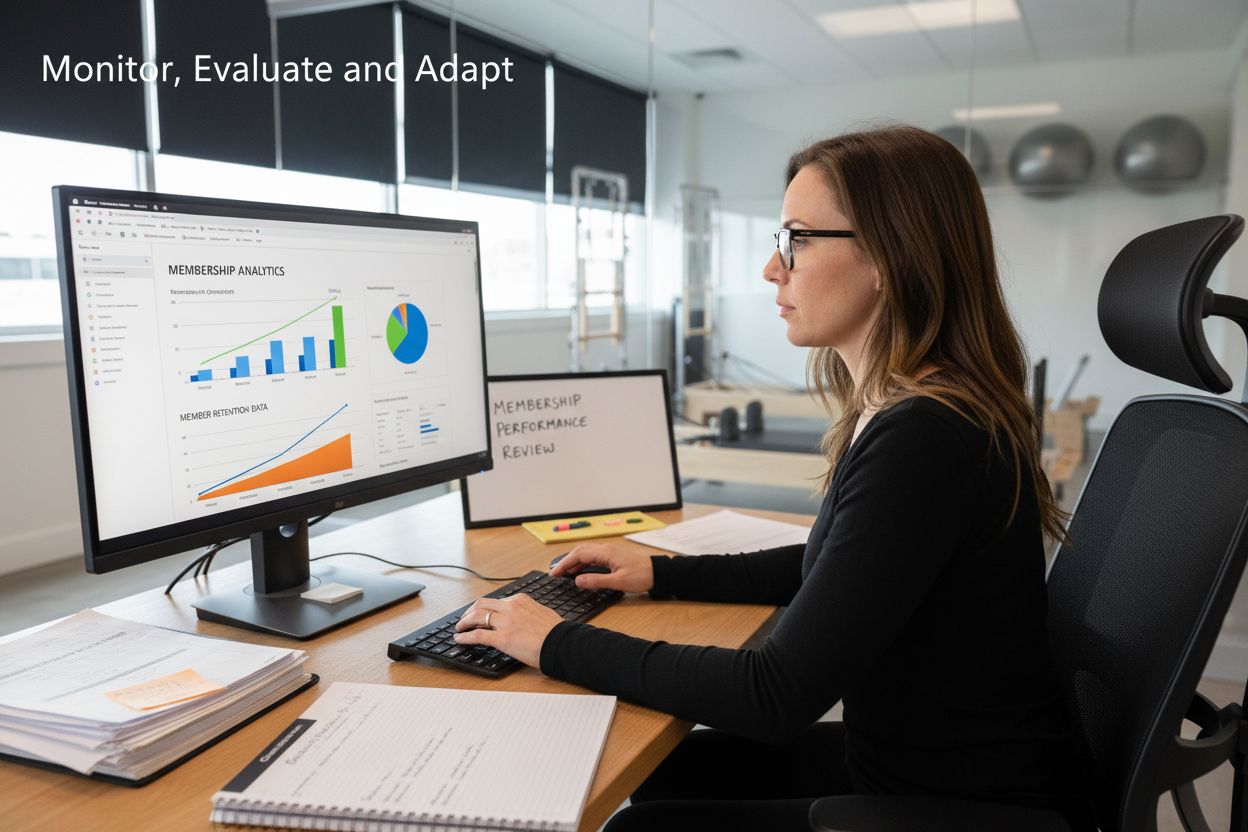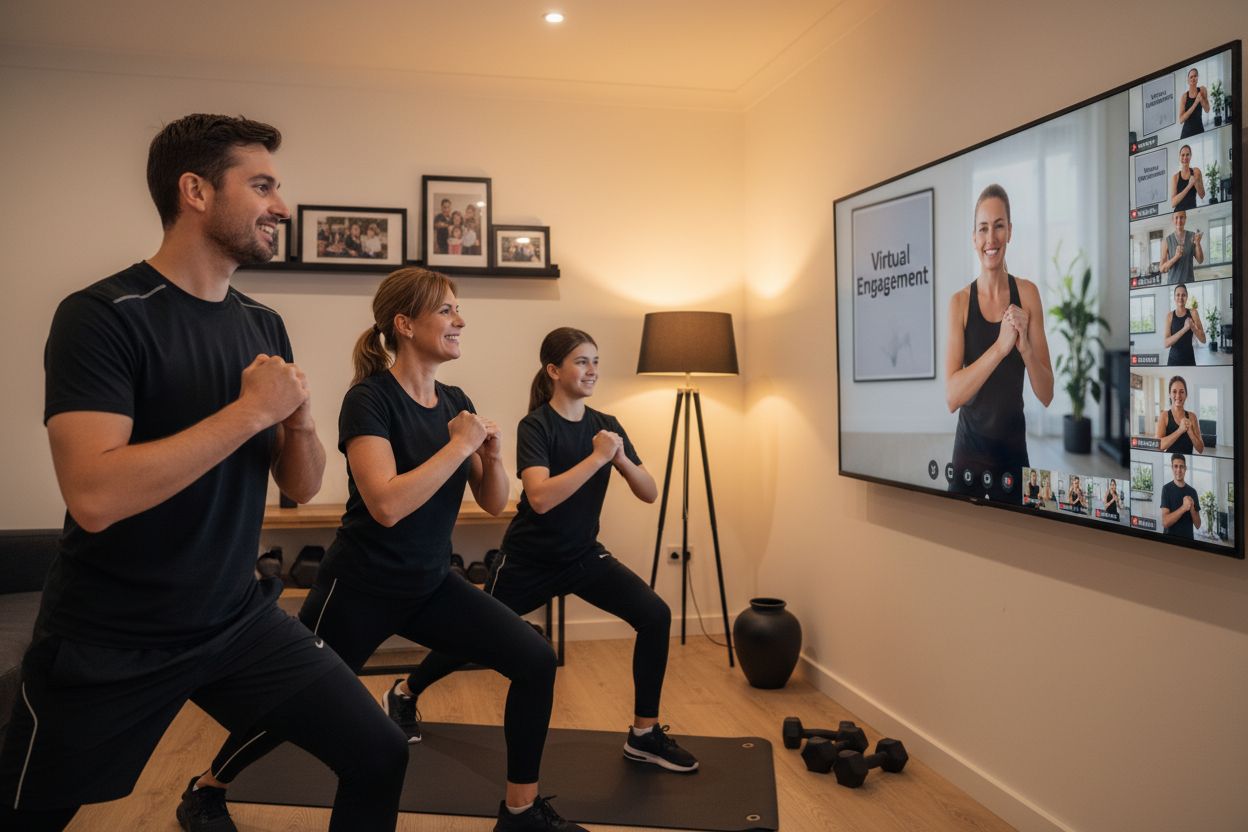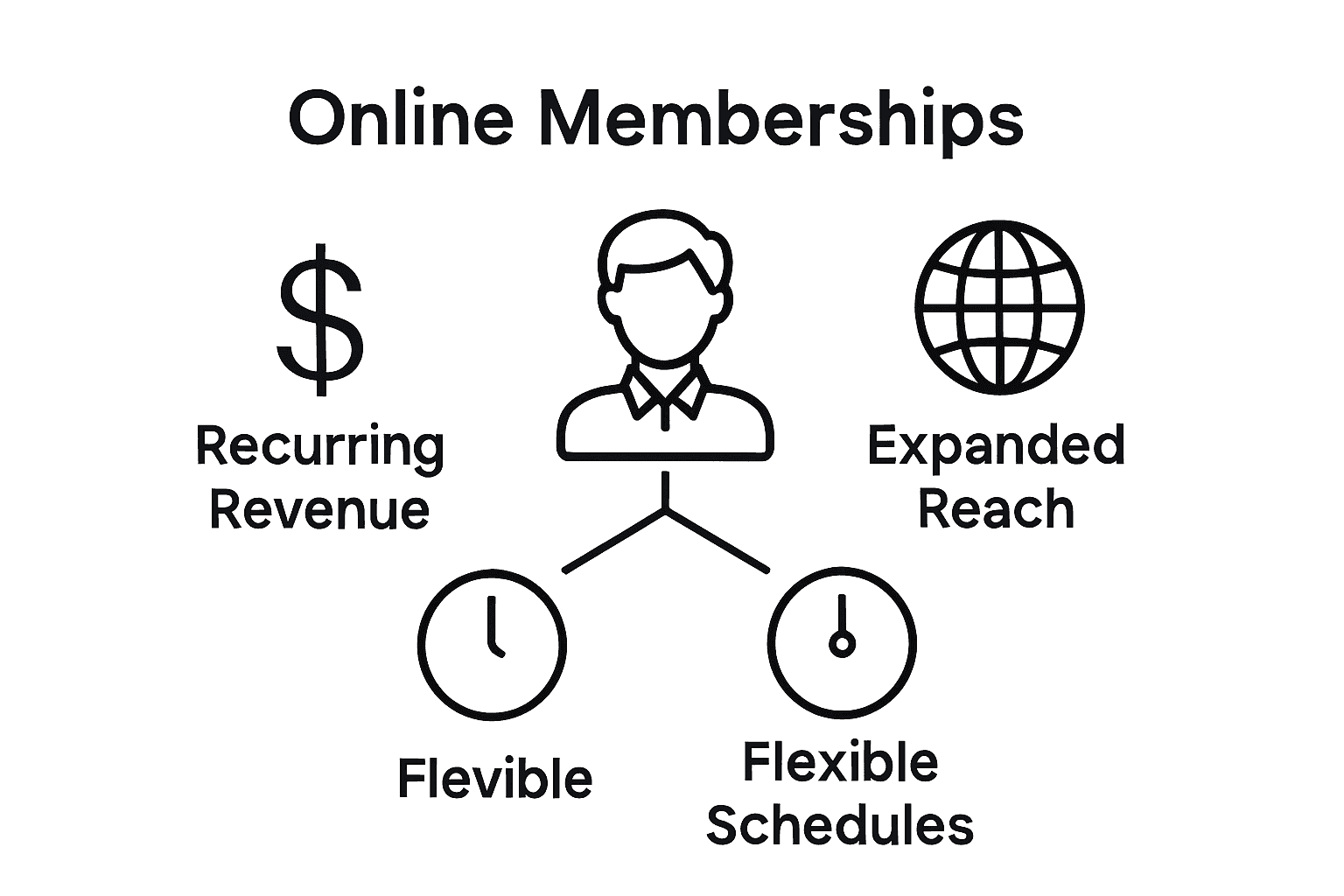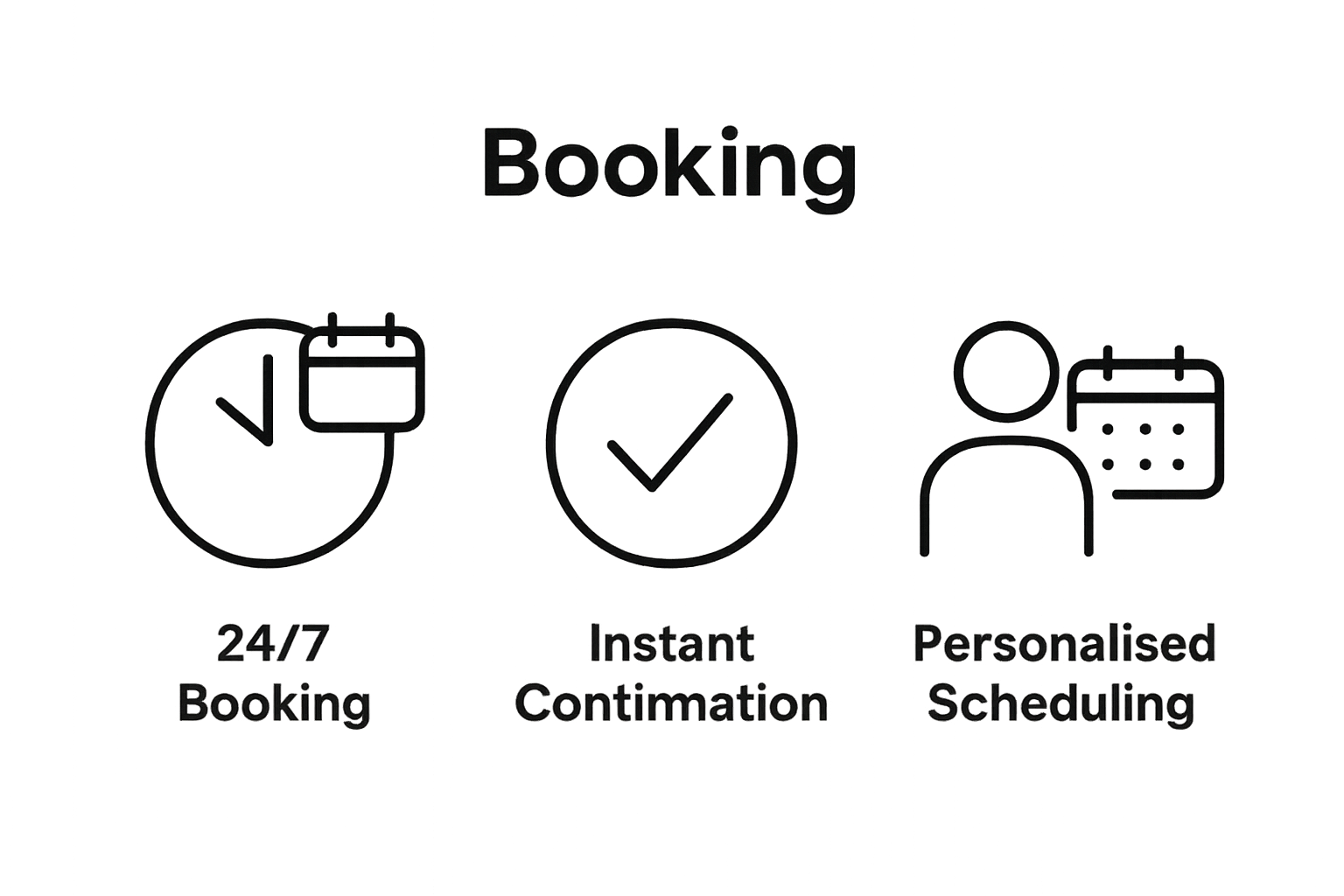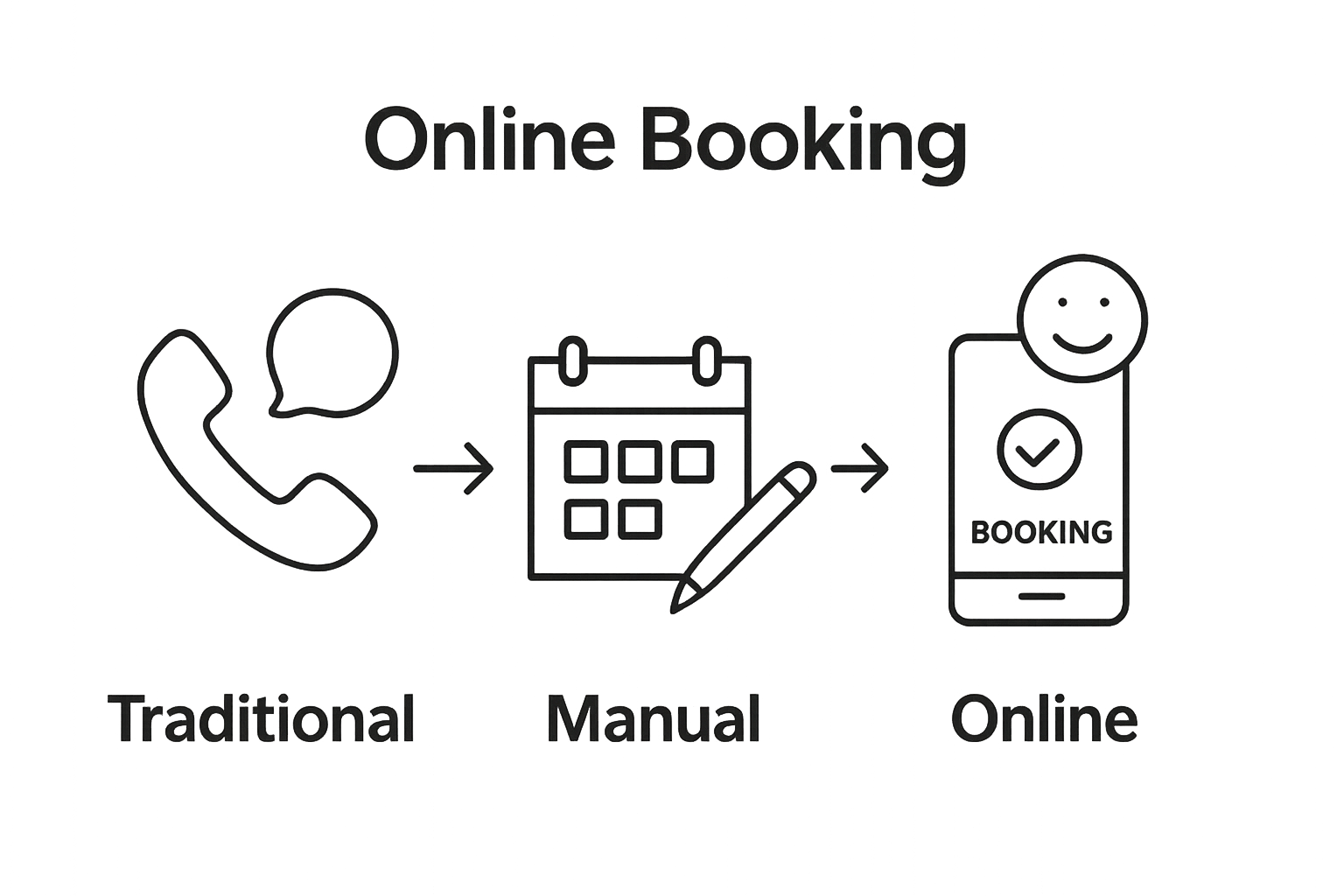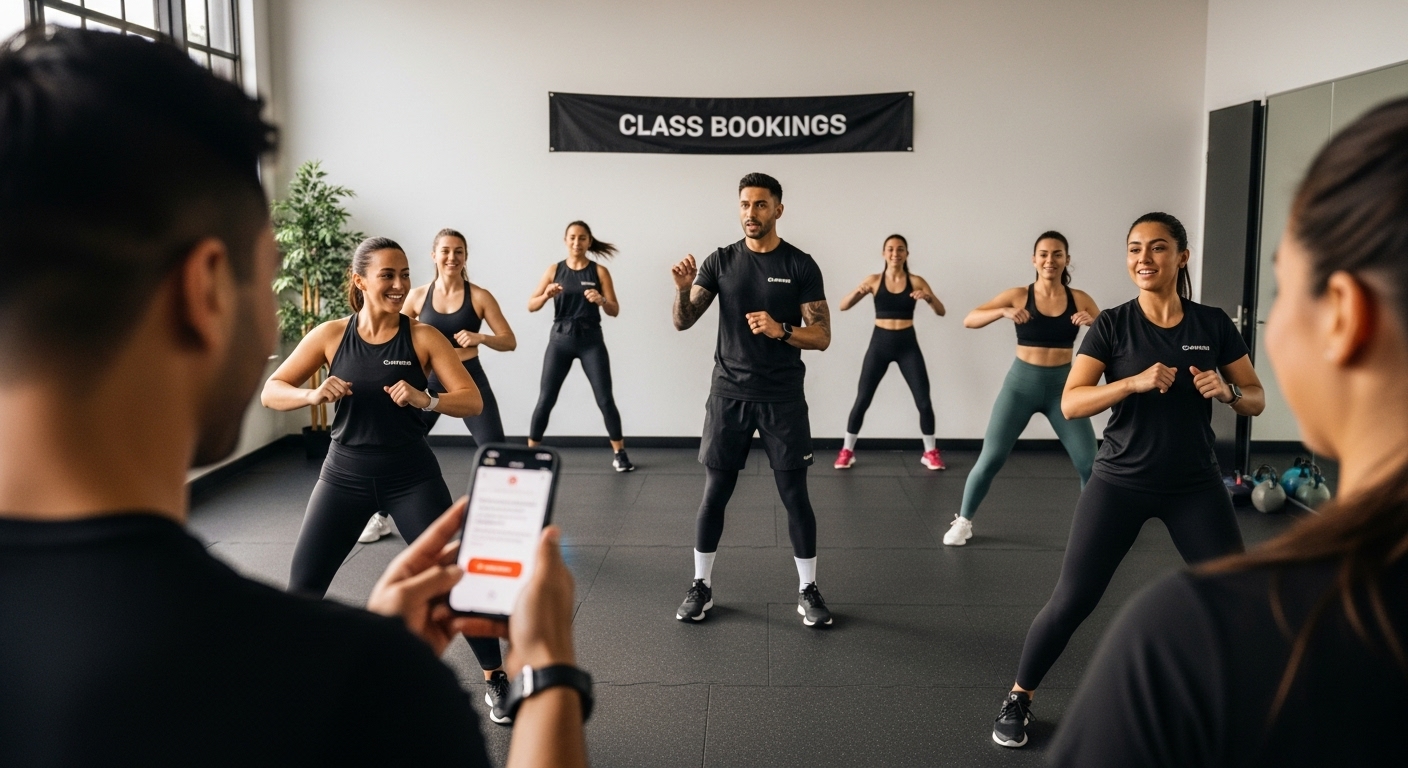Managing a full schedule of fitness classes used to mean endless phone calls, scribbled notes, and mixing up bookings. Now everything has shifted online and some platforms report that over 70 percent of bookings are made outside standard office hours using these digital systems. It sounds like the real win is speed and convenience for the client. Yet the bigger shift is less obvious. The real breakthrough is how these online tools set instructors free from admin chores so they can spend more time on what actually matters: delivering brilliant fitness experiences.
Table of Contents
- What Is Online Class Scheduling And Why It Matters
- The Importance Of Flexibility In Class Scheduling
- Understanding Different Scheduling Tools And Platforms
- How Online Scheduling Enhances Client Engagement
- Key Concepts For Effective Class Management
Quick Summary
| Takeaway | Explanation |
|---|---|
| Utilise online scheduling tools | These platforms streamline booking, payments, and communication, enhancing administrative efficiency for fitness instructors. |
| Offer flexible class timings | Providing varied scheduling options significantly boosts client engagement and accommodates diverse lifestyles effectively. |
| Prioritise client communication | Automated reminders and direct messaging enhance client relationships and encourage class participation, leading to improved retention rates. |
| Incorporate advanced tracking features | Use technology for attendance and performance metrics to refine class management and improve participant experiences. |
| Adapt to client needs proactively | Implement strategies that respond to modern client lifestyles to ensure programme sustainability and inclusivity. |
What Is Online Class Scheduling and Why It Matters
Online class scheduling represents a transformative digital approach for fitness instructors to manage and deliver professional exercise sessions efficiently. At its core, this technology enables fitness professionals to coordinate, advertise, and manage classes through digital platforms, dramatically simplifying administrative processes while expanding potential client reach.
The Digital Evolution of Fitness Class Management
Traditionally, fitness instructors managed schedules through manual methods like phone bookings, paper calendars, and in-person registrations. Modern digital scheduling systems have revolutionised this approach by providing comprehensive digital solutions that streamline booking, payment processing, and client communication.
Key advantages of online class scheduling include:
- Instant Booking Capabilities: Clients can reserve spots immediately from any device
- Automated Administrative Tasks: Reduces manual paperwork and scheduling conflicts
- Enhanced Client Communication: Automatic reminders and real-time updates
Understanding the Core Mechanics
Online class scheduling platforms integrate multiple technological components to create seamless experiences. These systems typically combine calendar management, payment processing, client databases, and communication tools into unified interfaces. Instructors can set class availability, define pricing structures, manage participant numbers, and track attendance through intuitive digital dashboards.
The technological infrastructure allows fitness professionals to focus more on delivering high-quality training experiences rather than getting bogged down in administrative complexities. By automating repetitive tasks, instructors can dedicate more energy to programme development, client engagement, and personal skill enhancement.
Ultimately, online class scheduling is not just a technological tool but a strategic business solution that empowers fitness instructors to operate more efficiently, reach wider audiences, and create more professional, responsive client experiences.
The Importance of Flexibility in Class Scheduling
Flexibility in class scheduling has become a critical component for fitness instructors seeking to meet the diverse needs of modern clients. By providing adaptable booking options, instructors can significantly enhance client engagement, accessibility, and overall programme effectiveness.
Understanding Client-Centric Scheduling
Research demonstrates that flexible scheduling directly correlates with increased participation rates. Modern fitness clients juggle complex work schedules, family responsibilities, and personal commitments, making rigid class timings increasingly impractical.
Key considerations for flexible scheduling include:
- Multiple Time Slot Options: Offering classes at varied times throughout the day
- Online and In-Person Alternatives: Providing digital and physical class formats
- Last-Minute Booking Capabilities: Allowing spontaneous class registrations
Strategic Benefits of Scheduling Adaptability
Flexible scheduling goes beyond mere convenience. It represents a strategic approach to client retention and programme sustainability. By acknowledging diverse client lifestyles, fitness instructors can create more inclusive and accessible training environments.
This approach enables instructors to:
- Attract clients with unpredictable work schedules
- Support clients across different time zones
- Accommodate varying fitness levels and personal constraints
Moreover, digital scheduling platforms enable instructors to implement sophisticated booking systems that automatically adjust to client preferences. These systems can offer waitlist management, automatic rescheduling, and personalised class recommendations based on individual client data.
Ultimately, scheduling flexibility is not just a technical feature but a fundamental strategy for building responsive, client-centred fitness programmes that adapt to contemporary lifestyle demands.
Understanding Different Scheduling Tools and Platforms
Scheduling tools and platforms have evolved dramatically, offering fitness instructors sophisticated digital solutions to manage classes, clients, and administrative tasks with unprecedented efficiency and precision.
Categories of Scheduling Platforms
Digital fitness management research indicates significant technological diversity in scheduling platforms. These tools range from basic calendar applications to comprehensive management systems with integrated payment processing, client tracking, and communication features.
![]()
Key platform categories include:
To help differentiate the main types of scheduling platforms available for fitness instructors, the following table summarises the categories discussed in the article and their defining characteristics.
| Platform Category | Main Characteristics | Typical Use Cases |
|---|---|---|
| Basic Calendar Tools | Offer simple scheduling, minimal extra features | Solo instructors, low admin needs |
| Comprehensive Management Systems | Integrate booking, payments, client tracking, comms | Multi-instructor studios |
| Specialised Fitness Platforms | Designed for fitness, with tailored class management | Group exercise programmes |
- Basic Calendar Tools: Simple scheduling with minimal features
- Comprehensive Management Systems: All-in-one solutions with multiple integrated functions
- Specialised Fitness Platforms: Tailored specifically for exercise class management
Essential Features to Consider
When evaluating scheduling tools, fitness instructors should prioritise platforms offering robust functionality. Critical features extend beyond basic booking capabilities and encompass more sophisticated operational requirements.
Essential platform capabilities include:
The following table summarises essential features to consider when evaluating digital scheduling platforms, making it easier for fitness instructors to compare and prioritise functionality based on their operational needs.
| Feature | Explanation |
|---|---|
| Automated Communication | Sends reminders and updates to clients automatically |
| Secure Payment Integration | Safely processes payments within the platform |
| Real-Time Capacity Tracking | Monitors and displays class availability instantly |
| Customisable Booking Workflows | Allows tailoring of booking processes to suit preferences |
| Multi-Device Accessibility | Enables access and management from any connected device |
- Automated client communication systems
- Secure payment integration
- Real-time class capacity tracking
- Customisable booking workflows
- Multi-device accessibility
Technology Integration and User Experience
Modern scheduling platforms are distinguished by their ability to seamlessly integrate multiple technological components. The most effective tools provide intuitive interfaces that simplify complex administrative tasks while offering comprehensive data insights.
Successful platforms transform scheduling from a mundane administrative function into a strategic business tool, enabling fitness instructors to focus more on delivering exceptional training experiences and less on operational management.
How Online Scheduling Enhances Client Engagement
Online scheduling represents a transformative approach to client interaction, moving beyond traditional booking methods to create more dynamic, personalised fitness experiences that actively foster deeper client relationships and programme participation.
Communication and Connection Strategies
Research demonstrates that digital scheduling platforms enable sophisticated communication strategies that significantly improve client engagement and programme retention.
Key engagement enhancement mechanisms include:
- Personalised Notifications: Tailored reminders and class updates
- Instant Communication Channels: Direct messaging and feedback systems
- Interactive Booking Experiences: User-friendly interfaces that simplify class selection
Psychological Engagement Factors
Digital scheduling tools tap into crucial psychological motivators that encourage consistent client participation. By providing transparent, accessible, and convenient booking experiences, these platforms reduce barriers to entry and make fitness commitments feel more manageable.

Psychological engagement drivers include:
- Reducing decision-making friction
- Creating a sense of personal accountability
- Offering immediate gratification through instant booking
- Providing clear visibility of progress and class history
Technology as an Engagement Catalyst
Modern scheduling platforms function as more than transactional tools. They serve as interactive engagement ecosystems that continuously connect clients with fitness opportunities, track individual progress, and create personalised fitness journeys.
By integrating smart technologies, fitness instructors can transform scheduling from a mundane administrative task into a powerful client relationship-building mechanism that supports long-term fitness goals and programme success.
Key Concepts for Effective Class Management
Effective class management represents a sophisticated blend of technological solutions, interpersonal skills, and strategic planning that transforms fitness instruction from simple exercise delivery to a comprehensive client experience.
Foundational Management Principles
Professional fitness management research highlights the critical importance of establishing clear operational frameworks that support both instructor objectives and client expectations.
Critical management principles include:
- Systematic Communication: Establishing clear, consistent interaction channels
- Operational Transparency: Providing predictable and reliable class structures
- Client-Centric Approach: Prioritising participant experience and individual needs
Technology and Performance Tracking
Modern class management integrates advanced technological tools that enable precise monitoring and continuous improvement. These systems go beyond basic scheduling, offering comprehensive insights into class dynamics, participant performance, and potential areas of programme enhancement.
Key technological tracking capabilities involve:
- Automated attendance monitoring
- Performance metric analysis
- Client progression tracking
- Personalised feedback mechanisms
- Real-time data visualization
Adaptive Management Strategies
Successful class management requires dynamic, responsive approaches that can quickly adapt to changing client needs, technological innovations, and fitness industry trends. Instructors must develop flexible frameworks that balance structured programme delivery with individual customisation.
This approach transforms class management from a rigid administrative function into an intelligent, responsive system that continuously evolves to meet the complex and changing needs of fitness participants.
Take Control of Your Class Scheduling Today with Classta.co
Are you tired of complicated manual schedules or frustrated when last-minute bookings lead to confusion? As explained in the article, modern fitness instructors face real challenges with managing class calendars, accepting payments securely and keeping clients engaged through flexible booking systems. If you are struggling to automate reminders, track attendance and adjust to clients who need multiple time slots, it is time to choose a platform that solves these problems for you. Classta.co was created especially for class-based instructors like you, offering a single solution for branded bookings, SMS and email reminders, safe payments, membership management and effortless tracking.
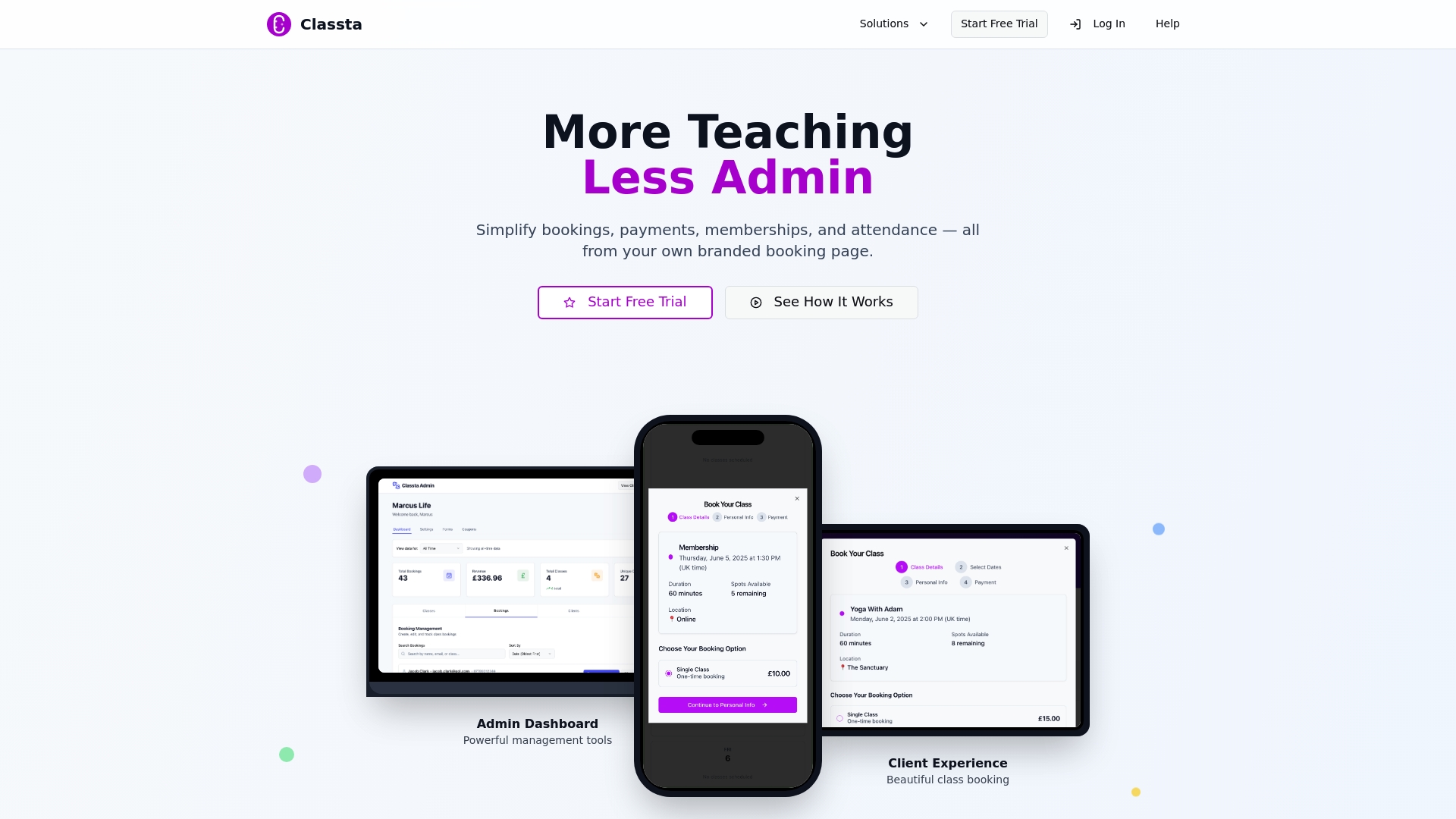
Transform your workflow and spend more time teaching and building client relationships instead of getting stuck in admin work. Visit Classta.co now to discover how you can simplify scheduling, automate communication and build a thriving client base. Do not wait to take your fitness business to the next level by making class management easier for both you and your clients. Learn more about our all-in-one platform and try it for yourself at Classta.co.
Frequently Asked Questions
What is online class scheduling for fitness instructors?
Online class scheduling is a digital tool that enables fitness instructors to manage, advertise, and coordinate their exercise classes efficiently. It streamlines processes like booking, payment, and client communication, allowing instructors to focus on providing quality training.
What are the benefits of using an online scheduling platform?
Using an online scheduling platform offers numerous benefits, including instant booking capabilities, automated administrative tasks, enhanced client communication, and the ability to reach a wider audience while reducing scheduling conflicts.
How does flexibility in class scheduling benefit clients?
Flexibility in class scheduling allows instructors to accommodate the varying needs of clients, including multiple time slot options, online and in-person format choices, and last-minute booking capabilities, ultimately improving client engagement and retention.
What features should I look for in a scheduling tool for my fitness classes?
When evaluating scheduling tools, consider features like automated communication systems, secure payment integration, real-time class capacity tracking, customisable workflows, and accessibility across multiple devices.

